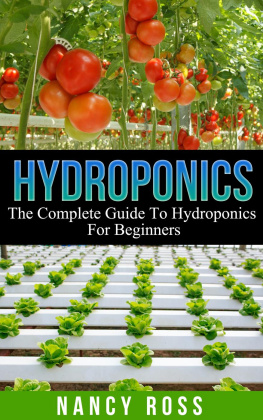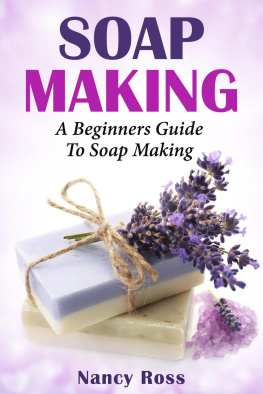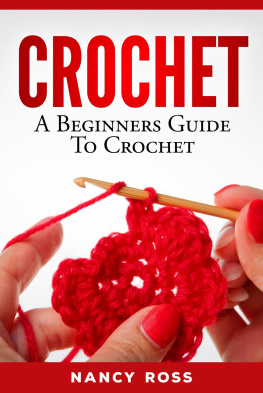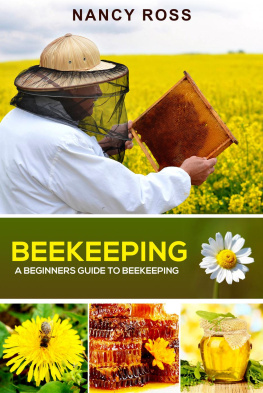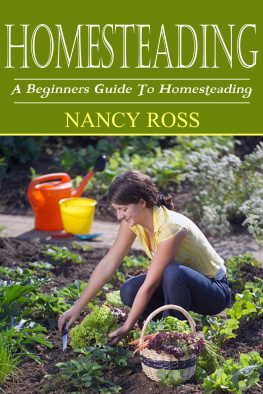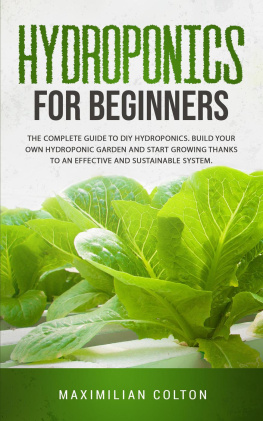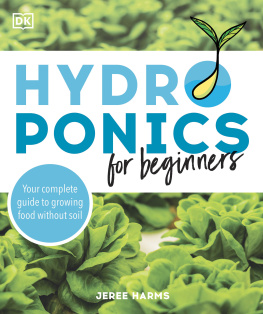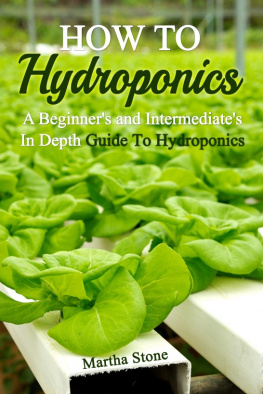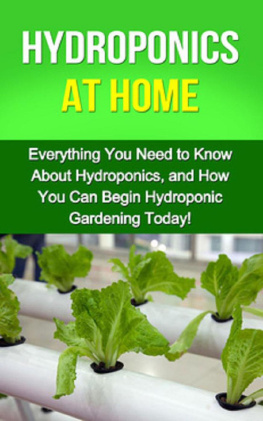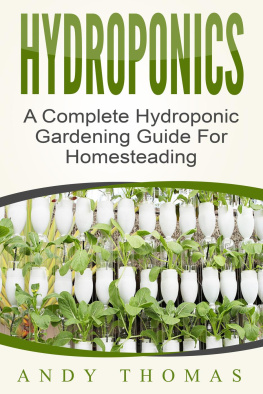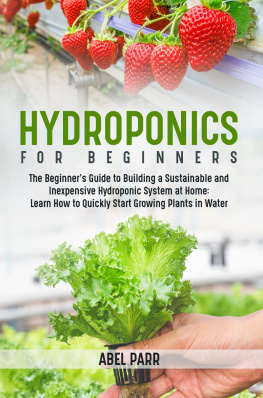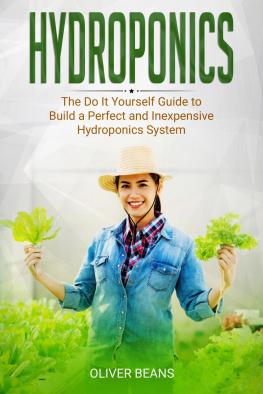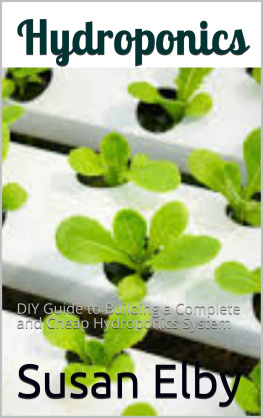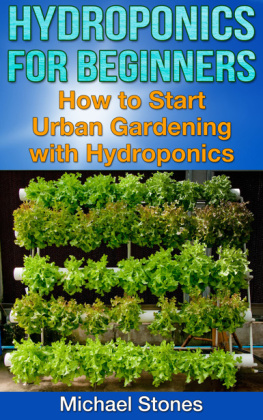Also by Nancy Ross
Gardening: The Complete Guide To Vegetable Gardening For Beginners
Hydroponics: The Complete Guide To Hydroponics For Beginners
Photography for Beginners: The Complete Photography For Beginners Guide
Dog Training: The Complete Guide To Dog Training For Beginners
Herbal Remedies
Marijuana: A Beginners Guide On How To Grow Marijuana
Crockpot
Pie Recipes
Ketogenic Diet
Gardening Collection
Tiny Houses
Backyard Chickens
Homesteading
Mini Farming
Self Sufficiency
Ice Cream Recipes
Whole Food: The Top 65 Recipes for a Whole Foods Diet
Beekeeping: A Beginners Guide To Beekeeping
Crochet: A Beginners Guide To Crochet
Bath Bombs: The Top 15 Bath Bomb Recipes
Soap Making: A Beginners Guide To Soap Making
Air Fryer Cookbook: The Top 48 Air Fryer Recipes
Mediterranean Diet: The Top 47 Mediterranean Diet Recipes
Spiralizer Cookbook: The Top 53 Spiralizer Recipes
Quick and Easy Recipes: 3 in 1 Collection - Crockpot, Air Fryer, and Spiralizer
Diy Projects: 3 in 1 Collection - Bath Bombs, Crocheting, and Soap Making
Alkaline Diet: Alkaline Diet For Beginners Plus the Top 40 Alkaline Recipes
Container Gardening: Container Gardening for Beginners
Special Diet Cooking: 3 in 1 Collection - Ketogenic Diet, Mediterranean Diet, Alkaline Diet
Greenhouse Gardening: Greenhouse Gardening for Beginners
Vertical Gardening: Vertical Gardening for Beginners
Gardening for Beginners: 3 in 1 Collection - Container Gardening, Greenhouse Gardening, Vertical Gardening
Bonsai for Beginners
Orchid Growing for Beginners: A Beginners Starters Guide to Growing Orchids
Tulip Gardening: A Beginners Starters Guide to Growing Tulips
Raising Dairy Goats: A Beginners Starters Guide to Raising Dairy Goats
Raising Beef Cattle: A Beginners Starters Guide to Raising Beef Cattle
Hydroponics:
The Complete Guide To Hydroponics for Beginners
Nancy Ross
Table of Contents
G ardening is a great process that you can choose to partake in. Many people love how relaxing the whole process can be and how much they can connect with the earth and have some fun. Plus it is always wonderful to taste the fresh produce at the end of the season when it comes straight from your own garden.
Traditional gardening is a challenge though. You are trying to fight with the bugs, the bad nutrients in the soil, and the weeds to keep the plants growing the way that they should. Many people give up on the work because it is just too hard to get the great looking crop that you are looking for. Rather than fighting with all of this, consider growing a hydroponic garden to get even better results.
Hydroponic gardening doesnt use soil like traditional gardening. Instead, you will pick out some special containers and an irrigation system in order to work with just water to keep the plants healthy. By adding in a little bit of nutrient solution to the water, and adding a pump to move around the water, you will be able to provide the plants with everything they need without having to fight with the soil and other issues that are present.
Anybody can do this process as it is not difficult and this guidebook is going to go through all of the steps that are needed to make it work for you. From understanding more about this process to picking out the right containers, understanding the nutrients that are needed, and even the ways to get perfect lighting for your garden, there is nothing you wont be able to do with your hydroponic garden.
Whether you are a beginner or you have been gardening for a long time, hydroponic gardening can be the best option for you. It helps you to get all the nutrients and benefits from a great and tasty garden without the issues that come from using your soil to make the plants. Read through this guidebook and learn everything that you need to know in order to get started with a hydroponic garden.
Chapter 1: What is Hydroponics?
B efore we can get too far into this process, we first need to understand what hydroponics is even about. First off, it is a type of gardening that you can use. While most people will start out with a nice plat in the yard or using pots to make their plants grow, with a lot of soil and other things that will help make it easier, hydroponics is going to take this in a different manner. It recognizes that things dont always work as well with the traditional methods and that soil isnt necessary to help your plants grow big and strong.
So, hydroponics is basically a process where water is distributed, making sure to preserve the quality, and still providing the nutrients that the plant needs to reach their full potential. This basically would include adding in some nutrients that the plants will need in the water that you provide, so the soil is not important.
When you plant your produce in your garden, you are relying on the rain to help out with the process. The dirt is going to have a lot of the nutrients that your plants need in order to be strong and healthy. But the plants are not able to get it all out on their own. Rather, it waits for the rain to come which then releases the nutrients and gives these to the plants. But when rain doesnt come, or you dont water your plants on your own, you are not only dehydrating the plants, but you are keeping the nutrients away from the plants.
While this may seem like an easy process for the plants to get their nutrients, it is not perfect. There are times when there isnt enough rain. The soil may not have enough of the nutrients inside of it at all and the plants cant take any more. Or perhaps the nutrients are too far down for the water to help out with. No matter the reason, this can make it really hard to provide the plant with the nutrients that it needs.
Since the natural way of providing nutrients to the plants is not always as effective as we may hope, hydroponics is sometimes used. The goal with this process is to do a replication of the natural setting, but it works to make this work better. The way that this is done is by adding nutrients into the water and helping it to enrich the plants in the process. When the right nutrients are in your water, the plants are able to absorb them and grow healthier and strong. If you do this process right, the plants will be able to grow better than it would in your own garden or other spot outside.
The nutrient solution is often up to you to create. You will usually need to make an enclosed system in order to move those nutrients to the right place. The enclosed options are great because they can also avoid the issue of evaporation so the plants can get all of the nutrients inside without the water evaporating. The water will always be there; you dont have to worry about the nutrients getting lost in the soil or that the water will disappear before all of the nutrients are absorbed. This can help out the plants so much more than before.

